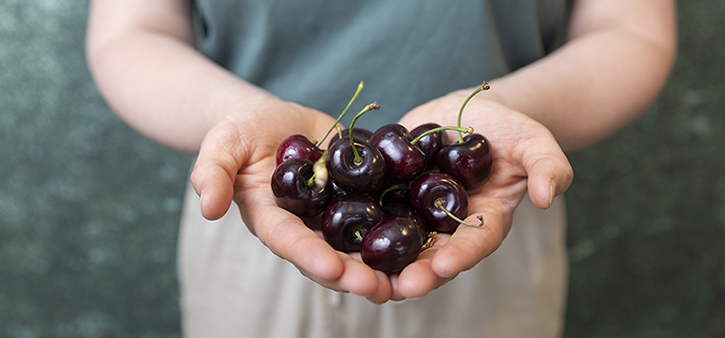In medicine, we mainly look at fertility in a mechanistic way. This causes modest success rates in the fertility industry and little attention to the role of hormones, nutrition and lifestyle. In this article, I discuss the role of hormones and metabolism in impaired fertility.
In deel één van dit artikel begin ik bij het begin: hoe ontstaat nieuw leven eigenlijk? Wat is de rol van oestrogeen en het metabolisme? Deel 2 lees je here.

An unexplained miracle
'We're pregnant!' Father shows me a picture from two days ago. A positive pregnancy test beams off the screen. Surprised and happy, they tell me - their junior doctor at the counselling centre at the time - the news. All at once it had been a hit. Amazed, because they had to wait six years for their first child. For six years they tried without success, despite everything turning out to be 'fine'. In a medical procedure, the couple finally got pregnant. This daughter was now two and mother had just stopped taking the pill. After all, it would surely take some time before they got pregnant again they thought. The couple turned out to be more fertile than ever.
Our mechanistic - and therefore simple - view of fertility
The first question when getting pregnant fails: is everything working and is everything permeable? That is, is there ovulation, can enough fit sperm reach the egg and can a fertilised egg get through the fallopian tubes to the uterus?
When problems arise, there are a number of solutions. Ovulation can be induced with medication. The strongest sperm can be given a helping hand into the uterus. And if that fails, or if both fallopian tubes are not permeable or there are too few good sperm cells - we still have in vitro fertilisation (IVF) or intracytoplasmic sperm injection (ICSI), in which several barriers are removed and an incipient embryo is placed directly into the uterus.
Misunderstood reduced fertility
And if everything works but you don't get pregnant? If you have 'unexplained' reduced fertility? Then eventually - after sometimes (having to) try for a while yourself - technical solutions also come up. Still, we don't know whether IVF works better than waiting longer when there is such unexplained reduced fertilityd1. But what else? If mechanical were the problem then, of course, most couples think they would have succeeded long ago. So they would like something to be done!
With fertility treatment like IVF, in an optimistic case, you have about a 25% chance of getting pregnant per treatment. How could we stretch that chance to 65%? - the percentage that highly fertile couples have of a spontaneous pregnancy. Still, a significant difference of some 40%.
For that, I think we need to look at what happens physiologically in a body that gets pregnant AND stays pregnant. By physiology, I mean the role of metabolism, hormones and the immune system. Let's start at the beginning: the cell.
Start of new life: the cell and its metabolism
All life arises from cells. How do we get more of them? Right, by dividing. As soon as the cell starts dividing, it changes its metabolism. It turns off its complex energy machines, the mitochondria, for a while. There is no room for that when you split yourself in two! The cell switches to simple energy burning: glycolysis. Glucose (sugar) is converted into a bit of energy in a few steps.
Glycolysis: essential for fertility
Glycolysis yields much less energy than mitochondria can generate, but you don't need a giant device for it either. Not even oxygen. Sperm cells and the cells that help develop the ovum in which the egg ripens use a lot of glycolysis. So these cells need sugars for their energy supply. You can see from this that you therefore need sugars - carbohydrates - for your fertility.
Of course, you need more than just glucose. Thus, glucose also needs to get ín the cell with the help of insulin. Insulin resistance can thus contribute to reduced fertility2.
How sperm cells get their energy
Sperm cells have a long way to go before they reach the egg. How does a sperm get enough carbohydrates? The uterus has thought of that. Sperm cells the uterus stores in the cervix and nurtures them with fructose, selenium and zinc, among other things3. With proper nutrition, sperm can survive in the cervix for several days until ovulation occurs.
The woman's metabolism could possibly determine how well she is able to take care of sperm for several days. Are there enough nutrients left over from her own metabolism? Or is her metabolism deficient? If so, perhaps her cells themselves need all the nutrients. That would shorten the time for sperm cells to survive in the cervix, thus lowering the chances of fertilisation. Sperm cells also survive longer in the uterus if they are of good quality. A nice interplay, then.
The egg cell, unlike the sperm cell, has an incredible number of mitochondria. This allows her to burn fats in addition to bandaging sugars, as she can only do so with the help of these little factories. In the fallopian tube, she still makes little use of them. But after fertilisation until implantation - which can take some 9 days - these mitochondria provide the energy needed for the developing foetus4.
Oestrogen: the hormone of new life and growth
Give cells extra oestrogen and they begin to divide spontaneously. Oestrogen is the hormone of new life. And thus also the hormone of glycolysis, the metabolism associated with dividing cells. Not only do you need oestrogen to make and mature an egg, oestrogen is also essential for sperm development. Sperm cells mature in the arms of the Sertoli cell, the mother cell of sperm cells. This nurtures them from nascent sperm cell to mature sperm cell. These nurturing mother cells also produce the hormone oestrogen, which is important for the growth of these sperm cells.
You will also find oestrogen in a wound that is healing. This is because in a wound you need a lot of new cells. Where healing is present, so is inflammation. After all, dead cells need to be cleaned up. More than that, the metabolism of dividing cells is similar to that of inflaming cells. Both use glycolysis. When a wound heals, the inflammation must also resolve. This is something that does not always go well. In a keloid scar, for example, where scar tissue expands beyond the original wound. It seems that too much inflammation and too much oestrogen remains present in that process5.
Oestrogen is thus the hormone of new life and new cells, but also involved in inflammation. Some inflammation is necessary for fertility. But after a phase of inflammation, another phase of healing is needed. Women's cycle is on and off inflammation and regeneration, inflaming and healing again. This is also beautifully described by Leah Hazard in her book Origin6.
Essential for fertility: inflammation
Every month, a localised inflammatory lesion develops at the time of ovulation -. inflammation - in the ovary, which involves oestrogen, prostaglandins (inflammatory substances) and other signalling substances. Many women can feel this ovulation by having pain in the lower abdomen or bloating around ovulation.
After the follicle bursts and the egg appears in the fallopian tube, calm returns. The inflammatory substances decrease. The remaining follicle transforms into a new organ: the yellow body, which starts making large amounts of progesterone - and then the regeneration. Het herstel. Daarover meer in deel 2.
At the time of implantation, some inflammation also takes place. A wound forms at the site of implantation. This allows the clump of cells formed after fertilisation, called the blastocyst, to enter the uterus. New vessels also form to provide nutrition and oxygen to the blastocyst.
Does it make sense to help implantation by manually creating a wound? This has been studied in women undergoing IVF, 'scratching' named. This does not seem to be as effective. Which suggests that making a wound, which causes inflammation, is not the main problem with reduced fertility. The inflammation works for most women.
Too much inflammation in fertility problems
Too much inflammation plays a role in many fertility problems. The uterus is in contact with the outside world and thus with pathogens and other foreign things. Therefore, its mucous membrane contains all kinds of immune cells that protect against this. Such as natural killer cells, mast cells and B cells. During pregnancy, however, these immune cells have to behave differently. After all, they have to welcome an embryo - half of which is foreign.
'Inflammation is necessary for fertility, but in unexplained reduced fertility, there seems to be an imbalance in inflammation and repair.'
Natural killer cells: protégés of the early embryo
Natural killer cells change their function dramatically in pregnancy - they become protectors of the early, partly foreign, embryo. They ensure that the level of inflammation in the endometrium is just right. In women with repeated miscarriages, these cells functioned differently7 and another study found that women with fertility problems had fewer of these killer cells in their endometrium8.
Pregnancy, once experienced, can alter the function of natural killer cells9. What could be a possible explanation is that after a successful fertility programme, it suddenly does manage to get pregnant spontaneously. Like the couple in the case study. This is not rare: some 20% of couples still become spontaneously pregnant after IVF10. Who knows, this effect can also be induced by mimicking pregnancy. For example, by taking hormones temporarily.
Mast cells and histamine in reduced fertility
Women with fertility problems have more mast cells in their endometrium11. You may know these immune cells from their role in asthma, hay fever and eczema. When activated, they release histamine, a substance that causes pain, redness and swelling. The hormone oestrogen can stimulate these mast cells. So via this route, too much oestrogen contributes to inflammation. More mast cells are also found to be present in their testes in men with fertility problems12. Possibly a sign that too much oestrogen is also present in them.
In endometriosis, a disease that can affect fertility, mast cells also play a role. They contribute to chronic pain and worsening of the disease13. The high oestrogens found in endometriosis cause the activation of mast cells, which then release a variety of inflammatory substances.
Endometriosis can clog the fallopian tubes, preventing an egg from reaching the uterus. This is when endometriosis is advanced. But what if endometriosis also means that the environment of the endometrium is not optimal, preventing implantation? Not a physical barrier, then, but an imbalance in the endometrium of inflammation and healing.
This imbalance could possibly improve with treatment aimed at reducing mast cells and too much estrogen. Perhaps we could increase implantation success with this approach! You might think about anti-histamine pills. These inhibit the effects of histamine. This has been studied in the past in endometriosis14. But possibly you can also work with nutrition. This is because mast cells are stimulated by parathormone and that hormone increases when you don't get enough calcium, magnesium and vitamin D.
Too many B cells in the uterus
You also prefer not to have too many B cells, cells that make antibodies. Women who received IVF with a 'cryo' (a frozen egg) were more successful if they had few activated B cells, called plasma cells, in their endometrium15. If you have many such cells in your endometrium, it is called chronic endometritis, or chronic endometritis. It doesn't necessarily cause symptoms, but it does lower your chances of getting pregnant. A chance that can simply be increased with a course of antibiotics16. Incidentally, oestrogen stimulates the activation of these B cells here too17.
Inflammation is necessary for fertility, but in unexplained fertility problems, it seems to be mainly due to too much inflammation. The regeneration, resolving the inflammation and returning to a stable situation, rather seems to be the problem.
Take away
Attention to physiology - that is, the role of hormones, metabolism and the immune system - can help to better understand impaired fertility. For example, glycolysis, which depends on sugars, plays an important role in providing energy to fertility cells. The hormone oestrogen is involved in the growth of new cells and new life, but also plays a role in inflammation.
Inflammation is necessary for fertility, but with (unexplained) reduced fertility, there seems to be an imbalance in inflammation and repair.
In deel 2 van dit artikel besteed ik meer aandacht aan de rol van herstel van inflammatie en het hormoon progesteron. Ook sluit deel 2 af met mogelijke oplossingen op het gebied van voeding en leefstijl.
Read more?
Take a look at my other articles or subscribe to my Dutch newsletter below. I send an interesting newsletter every month with a link to my latest articles as well. Or follow me on Instagram.
Would you like to chat with me after reading this article? You can: get in touch with me or schedule a free consultation. I also counsel women during pregnancy.
References
- Thesis T. Desire for children? Don't be fooled by the ivf industry. The Correspondent . Published September 18, 2018. Accessed May 16, 2023. https://decorrespondent.nl/8702/kinderwens-laat-je-niet-gek-maken-door-de-ivf-industrie/6cba0c3b-bafb-0013-0a64-745d8b2dc671 ↩︎
- Lei R, Chen S, Li W. Advanced in the study of the correlation between insulin resistance and infertility. Front. Endocrinol. 2024;15:1288326. doi: 10.3389/fendo.2024.1288326 ↩︎
- Sinterniklaas B. Podcast Erasmus MC. Increasingly slow swimmers: sperm quality drops sharply Published online 2022. ↩︎
- Babayev E, Seli E. Oocyte mitochondrial function and reproduction. Curr Opin Obstet Gynecol. 2015;27(3):175-181. doi:10.1097/GCO.0000000000000164 ↩︎
- Ogawa R. Keloids and hypertrophic scars. In: UpToDate. UpToDate; 2022. ↩︎
- Hazard L. Origin: The Miraculous Story of the Place Where Everything Begins. Balance sheet; 2023. ↩︎
- Habets D. Natural Killer Cell Profiling in Women with Recurrent Pregnancy Loss. maastricht university; 2022. doi:10.26481/dis.20220915dh ↩︎
- Wang C, Zhao X, Zhang H, et al. Comprehensive analysis of immune-related genes associated with the microenvironment of patients with unexplained infertility. Ann Transl Med. 2023;11(2):84-84. doi:10.21037/atm-22-5810 ↩︎
- Gamliel M, Goldman-Wohl D, Isaacson B, et al. Trained Memory of Human Uterine NK Cells Enhances Their Function in Subsequent Pregnancies. Immunity. 2018;48(5):951-962.e5. doi:10.1016/j.immuni.2018.03.030 ↩︎
- Visser 't Hooft T. One in five women also spontaneously pregnant after ivf. Medical Contact. Published July 3, 2023. Accessed July 8, 2023. https://www.medischcontact.nl/nieuws/laatste-nieuws/nieuwsartikel/een-op-de-vijf-vrouwen-na-ivf-ook-nog-spontaan-zwanger#reacties ↩︎
- Wang C, Zhao X, Zhang H, et al. Comprehensive analysis of immune-related genes associated with the microenvironment of patients with unexplained infertility. Ann Transl Med. 2023;11(2):84-84. doi:10.21037/atm-22-5810 ↩︎
- Elieh Ali Komi D, Shafaghat F, Haidl G. Significance of mast cells in spermatogenesis, implantation, pregnancy, and abortion: cross talk and molecular mechanisms. American Journal of Reproductive Immunology. 2020;83(5). doi:10.1111/aji.13228 ↩︎
- McCallion A, Nasirzadeh Y, Lingegowda H, et al. Estrogen mediates inflammatory role of mast cells in endometriosis pathophysiology. Front Immunol. 2022;13. doi:10.3389/fimmu.2022.961599 ↩︎
- McCain JR & Olley JF. The effect of an oral nasal decongestant upon the menstrual cycle. American Journal of Obstetrics and Gynaecology. 1963;87(3):354-362 ↩︎
- Li Y, Xu S, Yu S, et al. Diagnosis of chronic endometritis: how many CD138 + cells/HPF in endometrial stroma affect pregnancy outcome of infertile women? American Journal of Reproductive Immunology. 2021;85(5). doi:10.1111/aji.13369 ↩︎
- Xiong Y, Chen Q, Chen C, et al. Impact of oral antibiotic treatment for chronic endometritis on pregnancy outcomes in the following frozen-thawed embryo transfer cycles of infertile women: a cohort study of 640 embryo transfer cycles. Fertil Steril. 2021;116(2):413-421. doi:10.1016/j.fertnstert.2021.03.036 ↩︎
- Verthelyi DI, Ahmed SA. Estrogen Increases the Number of Plasma Cells and Enhances Their Autoantibody Production in Nonautoimmune C57BL/6 Mice. Cell Immunol. 1998;189(2):125-134. doi:10.1006/cimm.1998.1372 ↩︎


